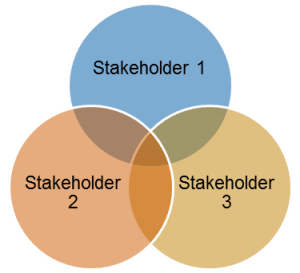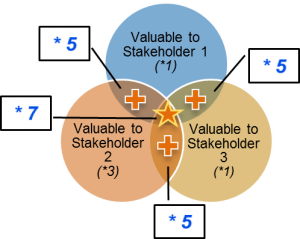RFPs: Ripe for Prioritization-EN
Kate McGoey
- Business Analyisis
- Article
Tabla de contenidos
It’s one thing to create and send out a Request for Proposal (RFP), full of “must have” features and functions, to vendors of technology solutions. It’s wholly another effort to evaluate the responses – and the specific solutions – provided by those vendors.
It’s a rare day that vendors will tell you “no”, their product doesn’t offer your “must have” capabilities. Rather, they will describe or demonstrate the many wonderful ways that their proposed solution supports every single one of those items in your feature list.
Therefore, how can you best evaluate their RFP responses? It’s all about priorities and value.
Priorities
You actually need to identify your priorities before you submit the RFP, because you need to include or address those within your request document. That doesn’t mean you have to tell the vendors what your priorities are from a ranking standpoint; however, if they understand your priorities they may be more inclined to be clear (aka, honest) about what their solution does or doesn’t do well in their response back to you. Once you understand your priorities you can be sure to ask the right questions in your RFP about the potential solutions, this way you will get what you need from the vendors to conduct your evaluation.

Figure 1
In order to identify a comprehensive list of priorities, you need to first identify the key stakeholders and users of the solution you are looking for. See Figure 1. For instance, once, when evaluating requirements definition tools, our team considered BAs, QA, Developers and the PMO/leadership as solution stakeholders.
Each stakeholder will have different needs or goals they want the solution to serve, so be sure to elicit and identify those priorities. Develop a list of the subsequent features or functions each stakeholder will require or want from the solution. If there are things the business needs from the solution, write those down as well. Keep the stakeholder lists separate at first (these are stakeholder requirements).
Once you have the individual lists, you can consolidate and rank-order the relevant requirements into a “global”, prioritized list of solution requirements. Sounds very simple, but when you have multiple, sometimes competing, priorities from different stakeholders getting that list into a single list of priorities for the solution can be a challenge. The trick is in agreeing on the prioritization criteria.
Value
Of all the criteria you could choose for prioritization and evaluation of the RFP responses upon receipt, value is the most important. After all, if a feature, requirement, solution, etc. is not valuable, what’s the advantage of having it in the first place?
However, value to whom or to what? It’s said that value is in the eye of the beholder. This is true, and stakeholders will ‘behold’ differently. So how can you prioritize for value when everyone considers value from different perspectives? The trick is in prioritizing and, later, evaluating a feature based on its value to any or all relevant perspectives.
First, features that serve the solution’s ability to BE a solution (e.g., core function) for a stakeholder should rank or be weighted higher, on their individual lists, than features that would enhance the solution’s usability or provide them with a nice bonus function.
Next, features providing value to more than one stakeholder should rank higher than those that serve only one need or stakeholder. Weight features higher if they do serve multiple groups. See Figure 2.

Figure 2
Certainly, the priority of a feature should be weighted or ranked based on its value to the project objectives and benefit to the business (opportunity for cost savings or revenue-building). But, also consider ranking the needs of stakeholders with more strategic or critical roles a bit higher than those of stakeholders less-relevant to the project domain.
While I’m not suggesting that any stakeholder is less valuable than another, I am suggesting that their needs or roles, in the context of your RFP or project objectives, certainly may be. You can do this by adding a ‘weighting factor’ for the stakeholder or stakeholder group overall to each of the features or requirements that group has identified as a need.
Overall, identify which features, functions or solutions serve multiple facets of value — “the more the merrier!” is what you’re looking for — weight them accordingly. To prioritize, simply multiply all the weighted scores together to arrive at a final prioritization score, and sort them in descending order. The highest priority items will rise to the top.
Evaluation
Once you submit your RFP with all your relevant questions, and it’s time to evaluate the responses, consider the degree to which each important priority is being served by the vendor and their solution offering.

Figure 3
For each item on your prioritized and weighted list, have every stakeholder (or group) evaluate the value of the vendor’s offering from the perspective of the solution itself. Evaluators should answer, “How satisfied are you that the functionality or design option provided by the vendor serves this need or requirement for you?” See Figure 3.
When you’re finished with the evaluation, each feature will have multiple scores – one for each stakeholder. Just average them across the rows to see the final score for each feature, and average the totals by column to see the scores for the vendor solution overall.